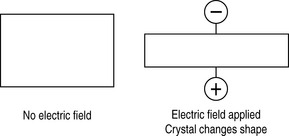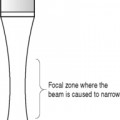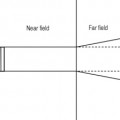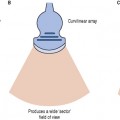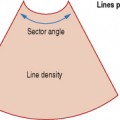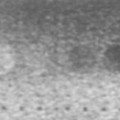Chapter 3 The piezoelectric effect
THE PIEZOELECTRIC EFFECT
This is the ability of a material to generate an electrical charge in response to applied pressure. When a piece of piezoelectric material is compressed a potential difference is generated across opposite faces – the one side becomes positive, the other negative (Fig. 3.1). Conversely, if an electric field is applied across the crystal it changes its shape (Fig. 3.2).
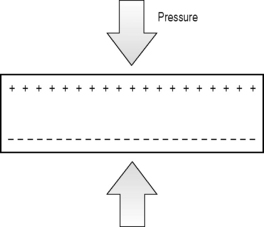
Fig. 3.1 Compression of a piezoelectric crystal results in a potential difference across opposite faces
PIEZOELECTRIC MATERIALS
Piezoelectric materials are crystalline materials composed of dipolar molecules, which are positive at one end and negative at the other (Fig. 3.3). Normally these dipolar molecules have a random arrangement within the material and they are unable to align themselves with an applied electric field (Fig. 3.4). However, if the material is heated above the Curie temperature in the presence of an electric field, the molecules will align themselves with that field. If the material is then allowed to cool below the Curie temperature, while the electric field is maintained, the molecules will remain aligned to the electric field and maintain this position even after the field is removed (see Fig. 3.5). This piezoelectric crystal can now be used in an ultrasound transducer to transmit and to detect sound. Opposite faces of the crystal have conducting plates attached to their surfaces. These surfaces are at right angles to the previously applied electric field (Fig. 3.6).
Stay updated, free articles. Join our Telegram channel

Full access? Get Clinical Tree


